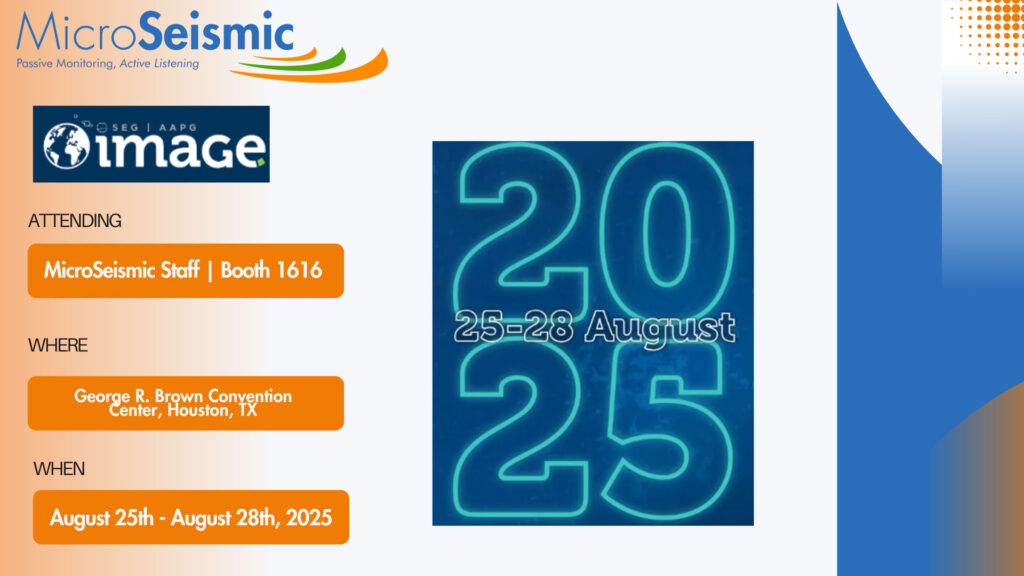
- This event has passed.
SPE Hydraulic Frac Technology Conference (HFTC)
HFTC Presentation Schedule
January 23-24, 2018
Booth 817
| Topic | Location | Presenter | |
|---|---|---|---|
| TUESDAY | |||
| 9:10 AM | Frac Hits And Why Treatment Order Maters | Booth | Carl Neuhaus |
| 9:30 AM | Estimating Unconventional Wells’ Productivity and Drainage Volume – Permian Case Study | Booth | Hasan Shojaei |
| 10:00 AM | Completions Geomechanics: The Missing Link to Improving Treatment Design | Booth | Orlando Teran |
| 10:30 AM | What Well Density Can You Support In The San Andres? | Booth | Asal Zeynal |
| 3:10 PM | Frac Hits And Why Treatment Order Maters | Booth | Carl Neuhaus |
| 3:30 PM | Estimating Unconventional Wells’ Productivity and Drainage Volume – Permian Case Study | Booth | Hasan Shojaei |
| WEDNESDAY | |||
| 9:15 AM | Completions Geomechanics: The Missing Link to Improving Treatment Design | Booth | Orlando Teran |
| 9:30 AM | What Well Density Can You Support In The San Andres? | Booth | Asal Zeynal |
| 10:40 AM | Frac Hits And Why Treatment Order Maters | Booth | Carl Neuhaus |
| 11:00 AM | Estimating Unconventional Wells’ Productivity and Drainage Volume – Permian Case Study | Booth | Hasan Shojaei |
| 3:45 PM | Completions Geomechanics: The Missing Link to Improving Treatment Design | Booth | Orlando Teran |
| 4:00 PM | What Well Density Can You Support In The San Andres? | Booth | Asal Zeynal |
SPE HFTC Abstracts
Frac Hits and Why Treatment Order Maters
Presented by: Carl Neuhaus
Microseismic-based stress analysis shows that completion efficiency can be influenced by neighboring depleted wellbores as well as the order in which the infill wells are treated. Quantifying stress changes based on those effects can help mitigate some of the negative effects by developing an appropriate treatment plan for the infill program.
Completions Geomechanics: The Missing Link to Improving Treatment Design
Presented by: Orlando Teran
In this talk we will demonstrate how microseismic fracture data can be used to quantify the stimulation pressures required to avoid “frac-hits”, out-of-zone growth and geohazards. The method is applied and discussed in the case of a microseismic event catalogue obtained during the stimulation of two horizontal wells landed in the Eagle Ford, where large variations in fracture patterns as well as geohazards were observed.
Estimating Unconventional Wells’ Productivity and Drainage Volume – Permian Case Study
Presented by: Hasan Shojaei
Microseismic-derived permeability enhancement results are integrated with PVT, core and well-log data to build a detailed reservoir simulation model for an 8-well pad in the Permian. Individual well productivities (PIndex) are predicted, and subsequently calibrated using actual production data (i.e. history matching). The resulting reservoir drainage patterns (DIndex) are used to evaluate wellbore spacing and completion design.
What Well Density Can You Support In The San Andres?
Presented by: Asal Zeynal
A case study from Cochran County, TX shows that an operator can develop and asset with six wells per section instead of four, as originally planned, for an effective increase in NPV by 28%.


